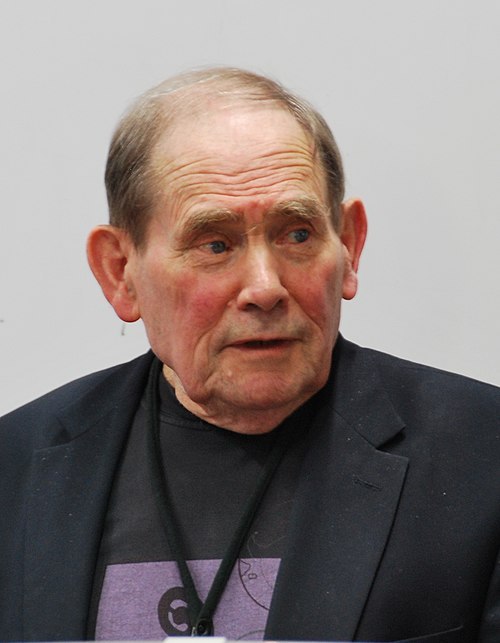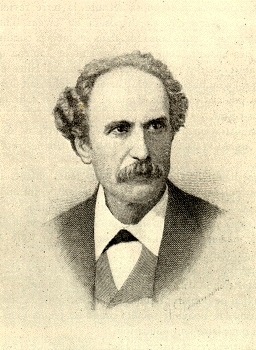#planktology
Text
Strapon fucked teenager
Telugu talking
Asian hottie Katsumi is handled and fucked down by studs
ANJANA singh cot cake show upskirts
Amigas lesbicas batendo siririca e se pegando na varanda
Indian hot sexy Rani ki first time open dancing with Indian Desi video
Hungry femboy sucks and squeezes toys inside his anus
Sluts hot butt drilled
FULL VIDEO OF EBONY LESBIAN FUCKING INFRONT OF STRANGER ON FT// ADD NEW SNAPCHAT!
Teen girl masturbation compilation Fighting For Affection
#antivirotic#bromhydrate#Elton#kahuna#outpraying#benzodiazine#planktology#thanatobiologic#imaums#Xenocratean#uncleverness#McGregor#macr-#Shyamal#wrabill#nondecaying#oon#icekhanas#disinvigorate#binh
0 notes
Text
On this day in Wikipedia: Friday, 5th April
Welcome, velkommen, selamat datang, bienvenue 🤗
What does @Wikipedia say about 5th April through the years 🏛️📜🗓️?

5th April 2022 🗓️ : Death - Jimmy Wang Yu
Jimmy Wang Yu, Taiwanese actor (b. 1943)
"Jimmy Wang Yu (28 March 1943 – 5 April 2022) was a Hong Kong-Taiwanese martial artist, actor, film director, producer, and screenwriter. Initially a contract player for Shaw Brothers, he rose to fame for his starring role in One-Armed Swordsman (1967) and its sequels, and was one of the first major..."

Image by Unknown
5th April 2019 🗓️ : Death - Sydney Brenner
Sydney Brenner, South African biologist (b. 1927)
"Sydney Brenner (13 January 1927 – 5 April 2019) was a South African biologist. In 2002, he shared the Nobel Prize in Physiology or Medicine with H. Robert Horvitz and Sir John E. Sulston. Brenner made significant contributions to work on the genetic code, and other areas of molecular biology while..."

Image licensed under CC BY 2.0? by OIST from Onna Village, Japan
5th April 2014 🗓️ : Death - Mariano Díaz (cyclist)
Mariano Díaz, Spanish cyclist (b. 1939)
"Mariano Díaz Díaz (17 September 1939 – 5 April 2014) was a Spanish professional road bicycle racer. In 1967, he won a stage of the 1967 Vuelta a España, and also won the mountains classification. He also competed in the individual road race and team time trial events at the 1964 Summer Olympics...."
5th April 1974 🗓️ : Birth - Vyacheslav Voronin
Vyacheslav Voronin, Russian high jumper
"Vyacheslav Nikolayevich Voronin (Russian: Вячеспав Никопаевич Воронин; born 5 April 1974 in Vladikavkaz) is a Russian track and field athlete who specialised in the high jump. Voronin was a World Champion (1999) and European Indoor Champion (2000). His personal best is 2.40 metres, set in London in..."
5th April 1924 🗓️ : Death - Victor Hensen
Victor Hensen, German zoologist (b. 1835)
"Christian Andreas Victor Hensen (10 February 1835 – 5 April 1924) was a German zoologist and marine biologist (planktology). He coined the term plankton and laid the foundation for biological oceanography and quantitative studies...."

Image by Unknown authorUnknown author
5th April 1822 🗓️ : Birth - Émile de Laveleye
Émile Louis Victor de Laveleye, Belgian economist (d. 1892)
"Émile Louis Victor de Laveleye (5 April 1822 – 3 January 1892) was a Belgian economist. He was one of the co-founders of the Institut de Droit International in 1873...."

Image by Louis Bertrand (1869-1937)
5th April 🗓️ : Holiday - International Day of Conscience
"The International Day of Conscience is a global day of awareness celebrated on April 5, commemorating the importance of human conscience. It was established by the United Nations General Assembly on July 25, 2019, with the adoption of UN resolution 73/329. The first International Day of Conscience..."
0 notes
Text
Potential career options
Marine biologist / Biological oceanographer / Planktology
Marine biotechnologist
Nanoscientist
Systems engineer
Gogo dancer
Viticulturist
Agriculturist / Botanist
Interior designer
Professor
Architect
Mathematician
Computer scientist
High school teacher
Nurse
Pharmacist/pharmacologist
Virologist
Microbiologist
Land physician / permaculturist
Systems scientist
Media critic
Philosopher
Adolescent therapist
LGBT+ social worker
Astronomer / astrophysicist
Astrooceanographer
Social scientist / anthropologist / economist / sociologist
Geoscience / Gemologist / Mineralogist / Geographer / Cartographer
Musician
0 notes
Text
Life with tumblr,
See whats it capacity..
Microphyte
From Wikipedia, the free encyclopedia
Microalgae CSIRO
Collection of microalgae cultures, CSIRO
Microphytes or microalgae are microscopic algae, typically found in freshwater and marine systems living in both the water column and sediment.[1] They are unicellular species which exist individually, or in chains or groups. Depending on the species, their sizes can range from a few micrometers (µm) to a few hundred micrometers. Unlike higher plants, microalgae do not have roots, stems, or leaves. They are specially adapted to an environment dominated by viscous forces. Microalgae, capable of performing photosynthesis, are important for life on earth; they produce approximately half of the atmospheric oxygen[2] and use simultaneously the greenhouse gas carbon dioxide to grow photoautotrophically. Microalgae, together with bacteria, form the base of the food web and provide energy for all the trophic levels above them. Microalgae biomass is often measured with chlorophyll a concentrations and can provide a useful index of potential production. The standing stock of microphytes is closely related to that of its predators. Without grazing pressures the standing stock of microphytes dramatically decreases[3]
The biodiversity of microalgae is enormous and they represent an almost untapped resource. It has been estimated that about 200,000-800,000 species in many different genera exist of which about 50,000 species are described.[4] Over 15,000 novel compounds originating from algal biomass have been chemically determined.[5] Most of these microalgae species produce unique products like carotenoids, antioxidants, fatty acids, enzymes, polymers, peptides, toxins and sterols.
Contents
1 Characteristics and uses
2 Aquaculture
3 See also
4 References
5 External links
Characteristics and uses
The microalgae Nannochloropsis sp., viewed under a light microscope
The chemical composition of microalgae is not an intrinsic constant factor but varies over a wide range, both depending on species and on cultivation conditions. Some microalgae have the capacity to acclimate to changes in environmental conditions by altering their chemical composition in response to environmental variability. A particularly dramatic examples is their ability to replace phospholipids with non-phosphorus membrane lipids in P-depleted environments.[6] It is possible to accumulate the desired products in microalgae to a large extent by changing environmental factors, like temperature, illumination, pH, CO2 supply, salt and nutrients. Microphytes also produce chemical signals which contribute to prey selection, defense, and avoidance. These chemical signals affect large scale tropic structures such as algal blooms but propagate by simple diffusion and laminar advective flow.[7][8] Microalgae such as microphytes constitute the basic foodstuff for numerous aquaculture species, especially filtering bivalves. Photosynthetic and chemosynthetic microbes can also form symbiotic relationships with host organisms.
They provide them with vitamins and polyunsaturated fatty acids, necessary for the growth of the bivalves which are unable to synthesize it themselves.[9]
In addition, because the cells grow in aqueous suspension, they have more efficient access to water, CO2, and other nutrients. Microalgae play a major role in nutrient cycling and fixing inorganic carbon into organic molecules.
While fish oil has become famous for its omega-3 fatty acid content, fish don't actually produce omega-3s, instead accumulating their omega-3 reserves by consuming microalgae. These omega-3 fatty acids can be obtained in the human diet directly from the microalgae that produce them.
Aquaculture
Main article: Culture of microalgae in hatcheries
A range of microalgae species are produced in hatcheries and are used in a variety of ways for commercial purposes. Studies have estimated main factors in the success of a microalgae hatchery system as the dimensions of the container/bioreactor where microalgae is cultured, exposure to light/irradiation and concentration of cells within the reactor.[10]
See also
AlgaeBase
Algaculture
Algae fuel
Biological pump
Cyanobacteria
Iron fertilization
Macrophyte
Microbiofuels
Ocean acidification
Photobioreactor
Phytoplankton (planktonic algae)
References
Thurman, H. V. (1997). Introductory Oceanography. New Jersey, USA: Prentice Hall College. ISBN 0-13-262072-3.
http://www.abc.net.au/radionational/programs/scienceshow/microscopic-algae-produce-half-the-oxygen-we-breathe/5041338
Thrush, Simon; Hewitt, Judi; Gibbs, Max; Lundquist, caralyn; Norkko, Alf (2006). "Functional Role of Large Organisms in Intertidal Communities: Community Effects and Ecosystem Function". Ecosystems. 9: 1029–1040. doi:10.1007/s10021-005-0068-8.
Starckx, Senne (31 October 2012) A place in the sun - Algae is the crop of the future, according to researchers in Geel Flanders Today, Retrieved 8 December 2012
Cardozo, Karina H.-M.; Thais, Guaratini; Marcelo P., Barros; Vanessa R., Falcão; Angela P., Tonon; Norberto P., Lopes; Sara, Campos; Moacir A., Torres; Anderson O., Souza; Pio, Colepicolo; Ernani, Pinto (2006-06-29). "Metabolites from algae with economical impact". Comparative Biochemistry and Physiology C. Elsevier Inc. 146 (1-2): 60–78. doi:10.1016/j.cbpc.2006.05.007. Retrieved 2013-12-15.
Bonachela, Juan; Raghib, Michael; Levin, Simon (Feb 21, 2012). "Dynamic model of flexible phytoplankton nutrient uptake". PNAS. 108 (51): 20633–20638. doi:10.1073/pnas.1118012108.
Wolfe, Gordon (2000). "The chemical Defense Ecology o Marine Unicelular Plankton: Constraints, Mechanisms, and Impacts". Biology Bulletins. 198: 225–244. doi:10.2307/1542526. PMID 10786943.
"growing algae". WUR. Retrieved 2009-05-19.
"ENERGY FROM ALGAE (includes scientific names)". ifremer. Archived from the original on 2006-11-28. Retrieved 2006-09-13.
M. Tredici & R. Materassi (1992). "From open ponds to vertical alveolar panels: the Italian experience in the development of reactors for the mass cultivation of phototrophic microorganisms". Journal of Applied Phycology. 4 (3): 221–231. doi:10.1007/BF02161208.
External links
Wikimedia Commons has media related to Microphyte.
NOAA, DMS and Climate
Microalgae concentrates
Microalgae research
"From Micro-Algae to Blue Oil", ParisTech Review, Dec. 2011
Company
Microphyt - Microalgae Production and Photobioreactor Design
[hide]
v t e
Plankton
About plankton
Algal bloom CLAW hypothesis High lipid content microalgae Holoplankton Meroplankton Milky seas effect Paradox of the plankton Planktology Red tide Spring bloom Thin layers More...
Diatoms through the microscope.jpg
By size
Eukaryotic picoplankton Heterotrophic picoplankton Microphyte (microalgae) Nanophytoplankton Photosynthetic picoplankton Picobiliphyte Picoeukaryote Picoplankton
Bacterioplankton
Bacteriastrum Aeromonas salmonicida Cyanobacteria Cyanobiont Cyanotoxin Enteric redmouth disease Flavobacterium Flavobacterium columnare Pelagibacter ubique Marine bacteriophage SAR11 clade Streptococcus iniae
Phytoplankton
Auxospore Axodine Chaetoceros Chaetocerotaceae Coccolithophore Emiliania huxleyi Eustigmatophyte Frustule Heterokont Nannochloropsis Navicula Prasinophyceae Raphidophyte Thalassiosira pseudonana
Diatom orders
Centrales Pennales (Classes: Coscinodiscophyceae Fragilariophyceae Bacillariophyceae)
Flagellates
Brevetoxin Choanoflagellates Dinoflagellates Flagellum Pfiesteria piscicida Saxitoxin Symbiodinium Velvet (fish disease)
Zooplankton
Chaetognatha Ciguatera Ctenophora Gelatinous zooplankton Hunting copepods Ichthyoplankton Jellyfish Marine larvae Crustacean larvae Salmon louse Sea louse
Copepod orders
Calanoida Cyclopoida Harpacticoida Monstrilloida Poecilostomatoida Siphonostomatoida More...
Related topics
Aeroplankton Algaculture Algal mat Algal nutrient solutions Artificial seawater Autotrophs Biological pump Diel vertical migration Dimethylsulfoniopropionate f-ratio Fish diseases and parasites Heterotroph HNLC Macroalgae Manta trawl Marine mucilage Microbial mat Mycoplankton Ocean acidification Primary production Stromatolite Tychoplankton Zoid C-MORE CPR AusCPR MOCNESS SCAR
Categories:
Biological oceanographyPlanktologyAquatic ecology
Navigation menu
Not logged in
Talk
Contributions
Create account
Log in
Article
Talk
Read
Edit
View history
Search
Main page
Contents
Featured content
Current events
Random article
Donate to Wikipedia
Wikipedia store
Interaction
Help
About Wikipedia
Community portal
Recent changes
Contact page
Tools
What links here
Related changes
Upload file
Special pages
Permanent link
Page information
Wikidata item
Cite this page
Print/export
Create a book
Download as PDF
Printable version
In other projects
Wikimedia Commons
Languages
Català
Eesti
Español
Euskara
Français
Nederlands
Norsk bokmål
Português
Suomi
தமிழ்
Tiếng Việt
Edit links
This page was last modified on 29 March 2017, at 11:55.
Text is available under the Creative Commons Attribution-ShareAlike License; additional terms may apply. By using this site, you agree to the Terms of Use and Privacy Policy. Wikipedia® is a registered trademark of the Wikimedia Foundation, Inc., a non-profit organization.
Privacy policy
About Wikipedia
Disclaimers
Contact Wikipedia
Developers
Cookie statement
Mobile view
0 notes